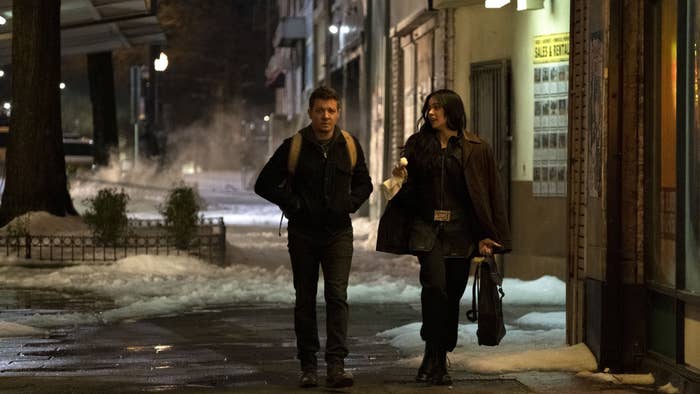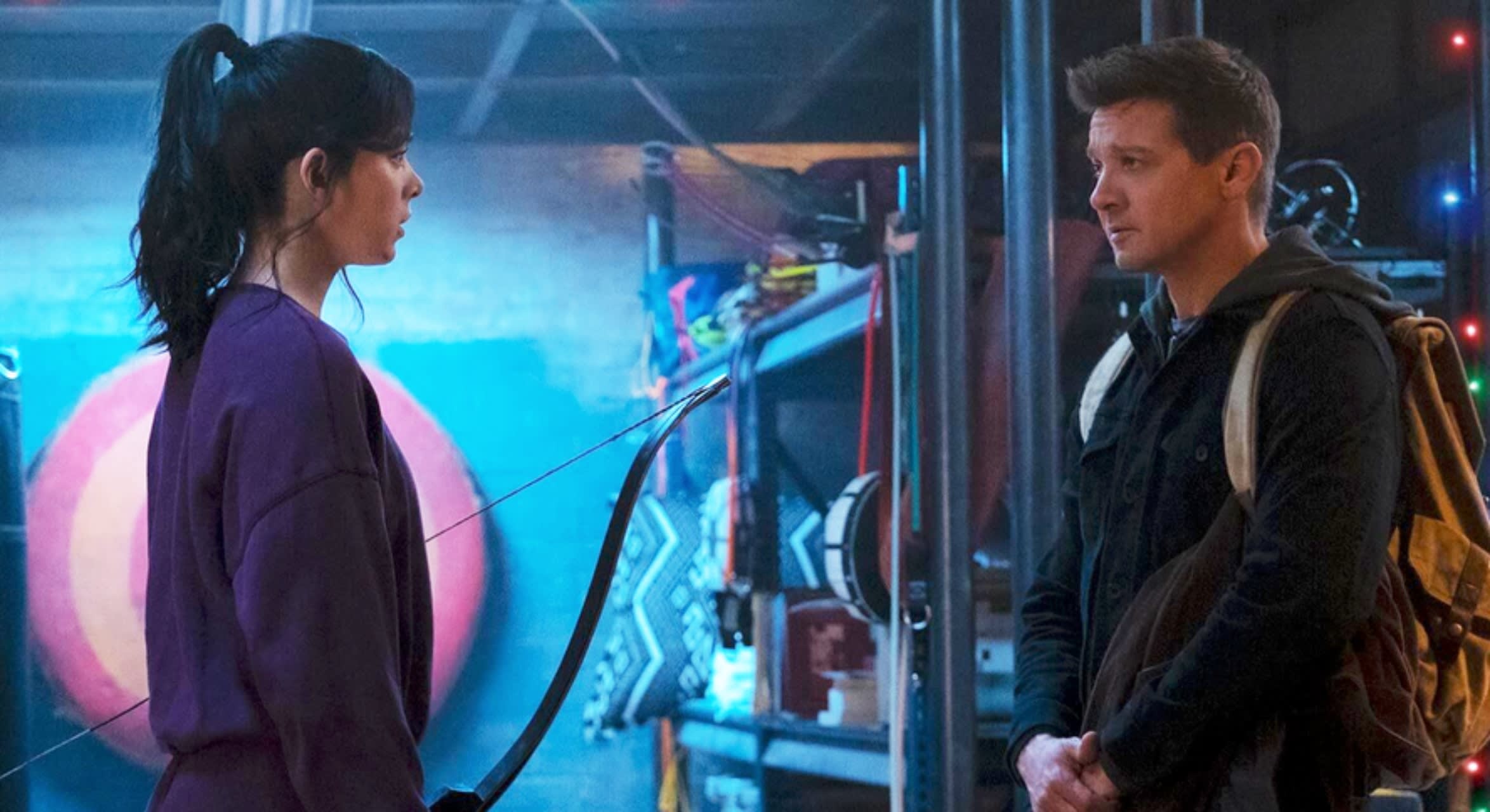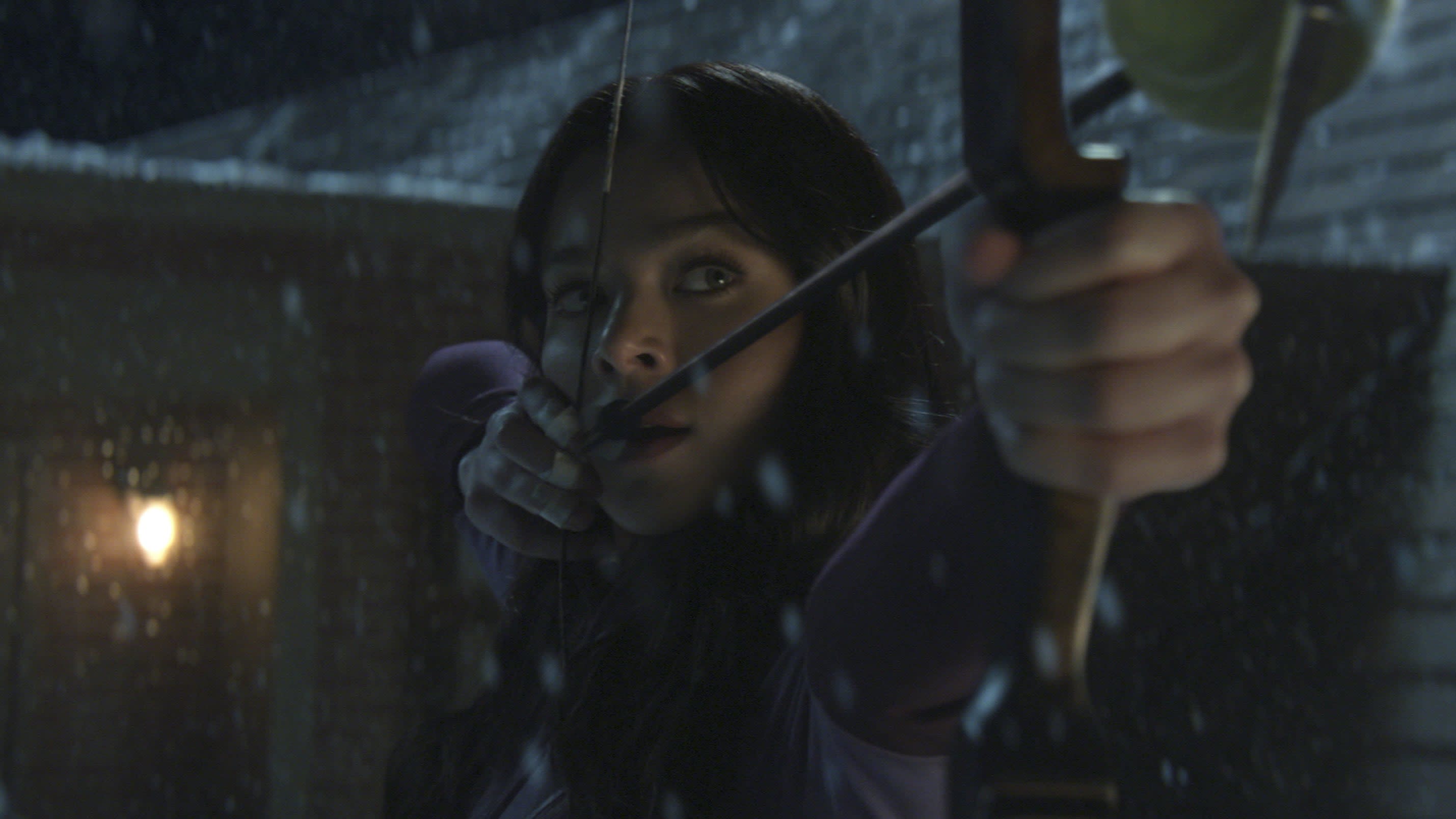
When thinking about the Marvel Cinematic Universe’s Avengers team, I’d be willing to wager Jeremy Renner’s Clint Barton, aka Hawkeye, isn’t at the top of the list of most memorable members. Despite his appearance in the first Thor movie, the everyman sharpshooter with a penchant for a bow and arrow doesn’t pop off the screen in the way his compatriots do; The MCU’s attempts at providing Hawkeye with a sizeable arc often feel akin to trying to make fetch happen. So as the MCU expanded from the silver screen and onto Disney+, including a Hawkeye series felt like an opportunity to right some wrongs and create a genuinely compelling arc for an underappreciated and overlooked character. So when Marvel announced a Hawkeye television series, even the most diehard MCU fans were skeptical.
And so Hawkeye arrives on Disney+ this week, bringing with it a potentially special sauce: the potential for the most faithful comic-to-screen adaptation in the MCU yet. Back in 2012, looking to capitalize on the inevitable success of Avengers, Marvel Comics launched a new Hawkeye title. Written by Matt Fraction and drawn by a team of artists including David Aja, Annie Wu, Javier Pulido, and Matt Hollingsworth on colors, the Hawkeye comic is “What Hawkeye does when he’s not Avenging,” and turned the character into a massive hit for the publisher. Fraction’s small-scale approach isn’t about saving the world but protecting the residents of a Bushwick apartment building from an increasingly dangerous group of mobsters. The writer’s snappy, snarky dialogue often evoked good Aaron Sorkin scripts as Clint and his protégé Kate Bishop sparred with one another, while the artists’ pencils complemented and enhanced the visual storytelling of the series. Fraction’s run also garnered praise for frequently deviating from traditional comic book storytelling expectations. For example, one issue is told entirely from the perspective of a pizza-loving dog named Lucky. It features almost no written dialogue, leveraging the strength of Aja’s art to tell the story instead. Ultimately, Hawkeye is vividly well-rendered across its 22 issues, both in how well its characters and world jumped off the page. The cult following it amassed made fans continually point to it as an adaptation-ready template for an eventual solo Hawkeye project in the MCU.
Despite carrying the moniker of Renner’s Avenging Archer, Disney+’s Hawkeye (written by Mad Men’s Jonathan Igla and directed by Documentary Now!’s Rhys Thomas) shifts its aim to focus on Hailee Steinfeld’s Kate Bishop. In two hours sent to critics (both of which will debut on Disney+), considerable time is spent introducing and fleshing out Kate, who falls into Clint’s crosshairs after discovering (and donning) his old Ronin costume in New York City. Endgameshowed Clint made several enemies during his tenure as the vicious vigilante. Thus, he’s hellbent on recovering the suit to ensure no one else gets hurt—even if it means missing Christmas plans with his returned family.
The MCU rarely misses the target on its casting, but they’ve hit the mark regarding Steinfeld. Rarely is the synergy between actress and character as perfect as it here; Steinfeld imbues the rookie Kate with endearing overconfidence, but never to the point where she’s unlikable. While the Fraction run frequently painted Kate as a stable and grounding force to Clint’s stupidity, Hawkeye flips the dynamic and posits her as a talented wunderkind—albeit one who can’t quite get out of her own way and still needs her affluent Manhattan socialite mother Eleanor (Vera Farmiga) to bail her out when things get tough. Steinfeld is born to play the role, right down to making the same facial expressions as Kate.

Clint is (understandably) less enthused by Kate’s shenanigans, especially at the expense of missing the holidays with his family. Hawkeye begins to soar when Clint and Kate get together, as their reluctant relationship works to balance out some of the survivor’s guilt Clint is still processing. Even two years after the events of Endgame, the sins of Clint’s past are figuratively and literally haunting him, as the return of the Ronin suit excavates a history he’s working hard to put to rest. Furthermore, Clint is still grieving Natasha’s death—a welcome change of pace after a previous moment of sincerity regarding the character’s passing ended up as a punchline. These two elements make the Clint of Hawkeye more somber than the one portrayed in Fraction’s story, but it would be disingenuous for the Disney+ series to not engage with the character’s storied past in such a direct manner—especially as it looks to define the future of the character.
While Hawkeye excels in its portrayal of the Clint and Kate partnership and the exploration of Clint’s current mental state, it stumbles outside of those elements. Kate’s mother and her fiance Jack (Tony Dalton, making the most of a well-telegraphed, almost literal mustache-twirling villain role) are pretty one-dimensional at this point, a stark contrast when compared to how well-realized Kate is as a character. On the Clint side, the inclusion of his family comes across less organically than it should, feeling much closer to a plot device than something natural to the show’s narrative.

For as eager as I was to see Fraction’s run adapted, much of the comic’s personality ends up lost in translation. While the Barton and Bishop banter is present (and works!), other elements like Lucky and the paper-thin sketching of the Tracksuit Mafia come across as Fraction karaoke at best and just blatant fanservice at worst. These elements are here because it feels like they have to be, not because they were thought through organically; there’s a real sense of the pointing Leo meme to their inclusion.
Furthermore, what made the Fraction run so successful was how it made its stakes relatable and small scale, and I can already sense Hawkeye losing this thread. Audiences know Florence Pugh’s Yelena will come across the archers at some point, never mind the speculation that comes with every single one of these MCU projects about who may or may not end up cameoing. I try my best to render my thoughts based only on what I’ve seen, engaging with what’s on the screen instead of critiquing it for what it’s not. But considering there are already questions about whether or not Kate will end up being a part of a possible Young Avengers project—the answer will undoubtedly be yes—and the fact all the MCU Disney+ series end up following the same template (Loki, a show I otherwise enjoyed, still needed to set up the multiverse for Doctor Strange) over and over again, it’s already hard to believe Hawkeye will get the chance to live on its own terms—and I’m waiting for the other shoe to drop accordingly. Being such an integrated part of the MCU has its pros (the long-term storytelling of Clint’s arc especially benefits here), but I can’t help but feel the cons here a little more than I otherwise would; I hope the rest of Hawkeye proves this to be a moot point.
It’s fitting Hawkeye is arriving and is set during the holiday season because it reminds of experiences you’d sometimes have as a kid. You end up waiting, hoping, and wishing to get your hands on a gift, only to receive it and realize it’s not quite what you’d built it up to be in your head. You’ll enjoy it for what it is, sure, but you can’t help but be a little disappointed.


